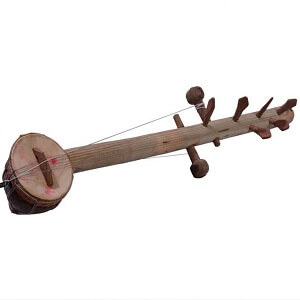Ravanahatha
 The ravanahatha (also known as ravanhatta or rawanhattha) is an ancient stringed musical instrument that is suggested to be the precursor to the violin. It is believed the ravanahatha originated in the Hela civilization of Sri Lanka during the King Ravana reign around 2500 BCE. The instrument was the King's instrument of choice, hence the name, which literally translates as Ravana’s hand.
The ravanahatha (also known as ravanhatta or rawanhattha) is an ancient stringed musical instrument that is suggested to be the precursor to the violin. It is believed the ravanahatha originated in the Hela civilization of Sri Lanka during the King Ravana reign around 2500 BCE. The instrument was the King's instrument of choice, hence the name, which literally translates as Ravana’s hand.
King Ravana is often mentioned in the oldest Sanskrit epic the Ramayana written around the 5th century BCE. Therein, his name is explained in a colorful myth where the demon-king Ravana challenges the great god Shiva (also known as Nandisa and Nandisvara) and loses. Ravana is usually depicted multi-headed and multi-armed, carrying all manner of lethal weapons. He appears in the decorative sculpture of Hindu temples, most often in battle scenes with Rama—with whom he'd had an eternal feud—or riding his winged chariot.
The body is the Dandi, a long bamboo stem punctured at regular interval to fix the knobs which provide the fine-tuning of the ravanahatha. The important part of the instrument is the Bejara – smoothed hair from horsetail, giving the ravanahatha its unique sound.